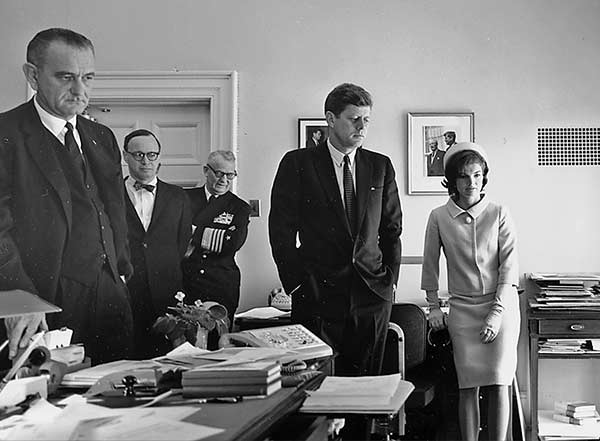By Cecil W. Stoughton / Wikimedia Commons / CC-BY-SA-3.0 / GFDL
1 – The Bay of Pigs Invasion
The Bay of Pigs Invasion (Invasión de Bahía de Cochinos) was a failed invasion of Cuba undertaken by a CIA-sponsored paramilitary group, Brigade 2506, on 17 April 1961.
Brigade 2506 fronted the armed wing of the Democratic Revolutionary Front, a counter-revolutionary military, trained and funded by the CIA. The group intended to overthrow the government of Fidel Castro.
US President Dwight D. Eisenhower was very concerned at the direction Castro’s government was taking, and in March 1960 he allocated $13.1 million to the CIA to plan Castro’s overthrow.
The CIA proceeded to organize the operation with the aid of various Cuban counter-revolutionary forces, training them in Guatemala.
Eisenhower’s successor John F. Kennedy approved the final invasion plan on 4 April 1961.
Over 1,400 paramilitaries assembled in Guatemala before setting out for Cuba by boat on 13 April 1961.
Two days later on 15 April, eight CIA-supplied B-26 bombers attacked Cuban airfields and then returned to the US.
On the night of 16 April, the main invasion landed at a beach named Playa Girón in the Bay of Pigs. It initially overwhelmed a local revolutionary militia.
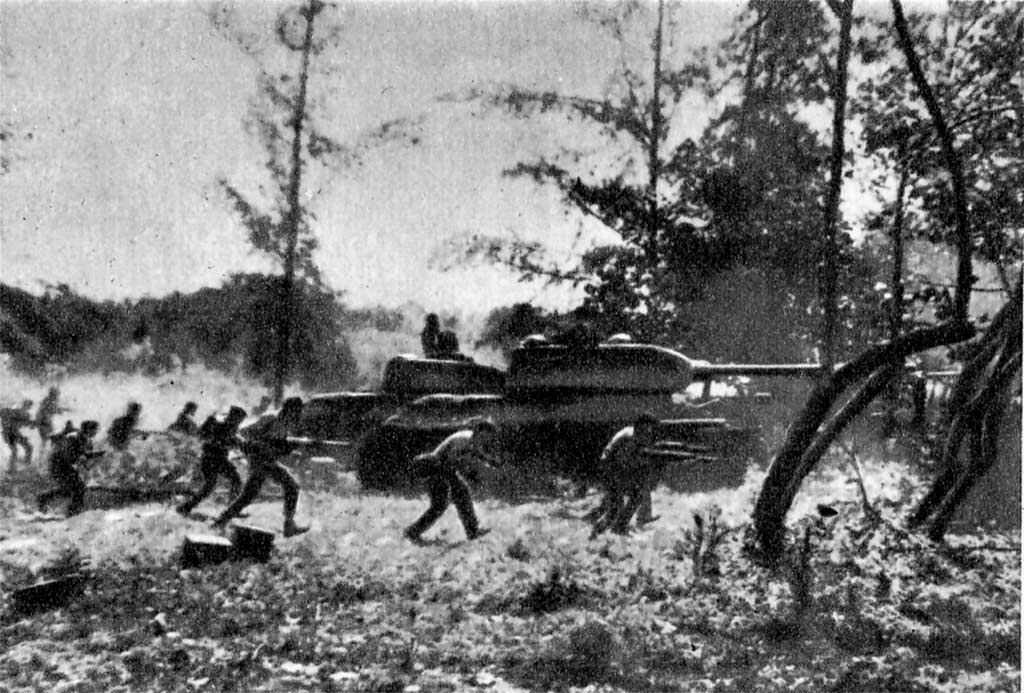
The Cuban Army’s counter-offensive was led by José Ramón Fernández before Castro decided to take personal control. As US involvement became apparent to the world, Kennedy decided against providing any further air cover.
As a result, the operation only had half the forces the CIA had deemed necessary. On 20 April, the invaders surrendered, with the majority being publicly interrogated and put into Cuban prisons.
The failed invasion helped to strengthen the position of Castro’s leadership, making him a national hero. It also strengthened the relations between Cuba and the Soviet Union.
This eventually led to the Cuban Missile Crisis of 1962. The invasion was a major failure for US foreign policy, with Kennedy ordering a number of internal investigations across Latin America.
2 – Yuri Gagarin Becomes First Person to Orbit Earth
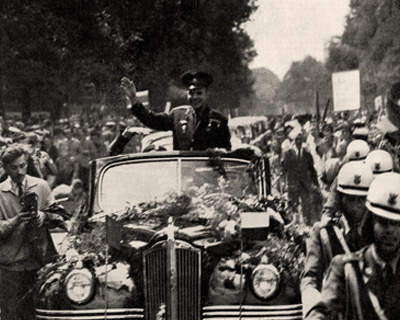
Yuri Alekseyevich Gagarin was a Russian Soviet pilot and cosmonaut. He was the first human to journey into outer space, when his Vostok spacecraft completed an orbit of the Earth on 12 April 1961.
Gagarin became an international celebrity and was awarded many medals and titles, including Hero of the Soviet Union, the nation’s highest honor.
Vostok 1 marked his only spaceflight, but he served as a backup crew to the Soyuz 1 mission, which ended in a fatal crash.
Gagarin later became deputy training director of the Cosmonaut Training Centre outside Moscow, which was later named after him.
Gagarin died in 1968 when the MiG-15 training jet he was piloting crashed. The Yuri Gagarin Medal is now awarded in his honor.
3 – Construction of the Berlin Wall Begins
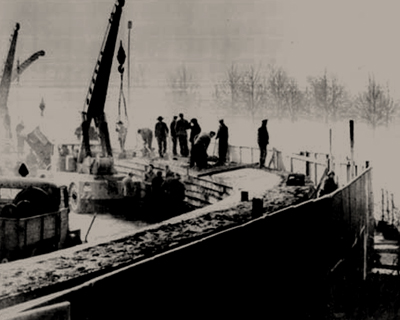
On Saturday, 12 August 1961, the leaders of the GDR attended a garden party at a government guesthouse, in a wooded area to the north of East Berlin. There, Ulbricht signed the order to close the border and erect a wall.
At midnight, the police and units of the East German army began to close the border and, by Sunday morning, 13 August, the border with West Berlin was closed.
East German troops and workers tore up streets running alongside the border to make them impassable. Barbed wire and fences were installed around the three western sectors, 156 km, and the 43 km that divided West and East Berlin.
The barrier was built inside East Berlin or East German territory to ensure that it did not encroach on West Berlin at any point.
The initial barrier was built up into the Wall proper, with the first concrete elements and large blocks being put in place on 17 August.
During the construction of the Wall, the National People’s Army and Combat Groups of the Working Class soldiers stood in front of it with orders to shoot anyone who attempted to defect.
A huge no man’s land was cleared to provide a clear line of fire at fleeing refugees.
From 13 August 1961, the Wall completely cut off West Berlin from surrounding East Germany and from East Berlin until government officials opened it in November 1989.
Its demolition officially began on 13 June 1990 and was completed in 1992. A few memorial sections of the wall remain as a reminder of how the city, and Europe, was divided for 30 years.
4 – Patrice Lumumba, Prime Minister of the Democratic Republic of the Congo, is Assassinated
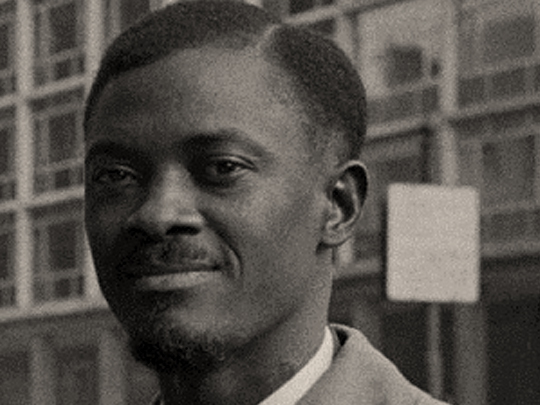
Patrice Lumumba was a Congolese independence leader and the first democratically elected leader of the Congo as prime minister.
As founder and leader of the mainstream ‘Mouvement National Congolais’ (MNC) party, Lumumba played an important role in campaigning for independence from Belgium.
Shortly after Congolese independence in 1960, a mutiny broke out in the army, marking the beginning of the Congo Crisis.
Lumumba appealed to the United States and the United Nations for assistance in suppressing the Belgian-supported Katangan secessionists. Both parties refused, so Lumumba turned to the Soviet Union for support.
This led to growing differences with President Joseph Kasa-Vubu and chief-of-staff Joseph-Désiré Mobutu as well as to foreign opposition from the United States and Belgium.
Lumumba was subsequently imprisoned by state authorities under Mobutu and executed by a firing squad under the command of Katangan authorities.
The United Nations, which he had asked to come to the Congo, did not intervene to save him. Belgium, the United Kingdom, and the United States have all been accused of involvement in Lumumba’s death.
The latter as part of Cold War rivalry with the Soviet Union, a country the Americans were determined should not gain access to Congo’s uranium riches used to make nuclear bombs.
5 – The Soviet Union Detonates the Most Powerful Nuclear Weapon Ever – Nicknamed Tsar Bomba
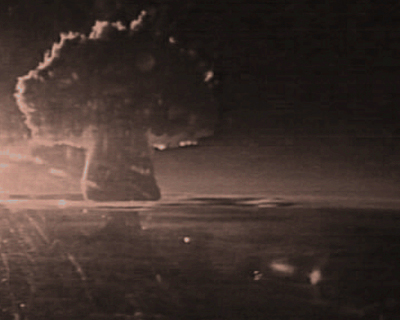
Tsar Bomba was the Western nickname for the Soviet hydrogen bomb, code-named Vanya, the most powerful nuclear weapon ever detonated.
Its test on October 30, 1961, remains the most powerful human-made explosion in history. Developed by the Soviet Union, the bomb had a yield of 50 megaton TNT.
The bomb was detonated on the cape of Sukhoy Nos on Severny Island, part of the Novaya Zemlya archipelago.
All buildings in the village of Severny, located 55 kilometers from ground zero within the Sukhoy Nos test range, were destroyed.
In districts hundreds of kilometers from ground zero wooden houses were destroyed, stone ones lost their roofs, windows, and doors, and radio communications were interrupted for almost one hour.
One participant in the test saw a bright flash through dark goggles and felt the effects of a thermal pulse even at a distance of 270 kilometers.
The heat from the explosion could have caused third-degree burns 100 km away from ground zero
Atmospheric focusing caused blast damage at even greater distances, breaking windows in Norway and Finland. Sensors continued to identify the shockwaves after their third trip around the world.
6 – Kenyan Founding Father Jomo Kenyatta is Released From Jail
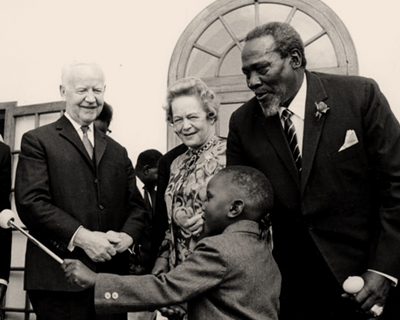
Jomo Kenyatta was the first President of Kenya. Kenyatta led Kenya from independence in 1963 to his death in 1978, serving first as Prime Minister and then as President.
He is considered the founding father of the Kenyan nation. Kenyatta was a well-educated intellectual who authored several books and is remembered as a Pan-Africanist.
Kenyatta was arrested in October 1952 and indicted with five others on the charges of being a member of the Mau Mau Society, a radical anti-colonial movement engaged in rebellion against Kenya’s British rulers.
The trial lasted five months. Rawson Macharia, the main prosecution witness, perjured himself. The judge, who had only recently been awarded an unusually large pension, was openly hostile to the defendants’ cause.
The defence, led by British barrister D. N. Pritt, argued that the white settlers were trying to scapegoat Kenyatta and that there was no evidence tying him to the Mau Mau.
The court sentenced Kenyatta on 8 April 1953 to seven years’ imprisonment with hard labor and indefinite restriction thereafter. The subsequent appeal was refused by the British Privy Council.
Kenyatta remained in prison until 1959, after which he was detained in Lodwar, a remote part of Kenya. On 28 February 1960, a public meeting of 25,000 in Nairobi demanded his release.
On 15 April, over a million signatures for a plea to release him were presented to the Governor.
On 14 May, he was elected KANU party President in absentia. On 14 August 1961, he was released and brought to Gatundu.
Kenyatta was admitted into the Legislative Council after his release. Elections were then held in May 1963, pitting Kenyatta’s KANU against the KADU. KANU beat KADU by winning 83 seats out of 124.
On 1 June 1963, Kenyatta became prime minister of the autonomous Kenyan government.
